Attendance management might not sound like the most thrilling part of running a business or leading a team. Still, it quietly but surely plays a massive role in maintaining team productivity, employee engagement, and your bottom line.
This article is all about tackling employee attendance head-on. We’ll break down the methods and tools that will help you keep tabs on who’s in or out and stay in full control of your business resources.
Let’s get started!
What Is Attendance Management?
Attendance management is the backbone of effective workforce management. It’s a systematic approach to tracking when employees start and stop their workdays. But it’s not just about employees’ presence records. It dives deeper into leave management, payroll, and compliance with organizational policies and labor laws.
What Challenges Does It Help to Overcome?
- Reduced productivity. Unmanaged employee attendance is often linked to elevated absenteeism rates, which, in turn, directly correlate with low team productivity. On the other hand, effective attendance management allows you to ensure that the right employees are present at work when needed and keep the wheels turning without hiccups.
- Time theft. Buddy punching and inaccurate time reporting can cost your business a lot of money. By implementing a robust attendance system, you can minimize these unnecessary expenses and pay your team members accurately for the actual hours they worked.
- Compliance risks. Labor laws and regulations are strict. Without proper attendance tracking, you risk falling out of compliance and attracting hefty fines. An effective system helps to avoid such legal pitfalls and keep your budget intact.
- Resource misallocation. Knowing who is available and when is key to optimal resource allocation. Attendance management provides real-time data that empowers you to make informed decisions on your staffing levels and project assignments.
- Employee disengagement. Poor attendance management may lead to overwork for some employees and underutilization for others. Such imbalance often promotes disengagement. Yet by fairly distributing workload through efficient attendance management, you can boost morale and enhance employee engagement multifold.
5 Key Rules for Effective Attendance Management
1. Promote good attendance
Consider rewarding employees who consistently meet attendance expectations. The key here is stressing the importance of good attendance for the team and the company’s goals: its ability to stick to the plans and maintain overall productivity.
Whether it’s through public recognition, bonuses, extra time off, or other perks, acknowledging and rewarding good behavior encourages it. Such incentives will not only help you reduce unscheduled absences but also make your employees more productive and engaged at work.
2. Strive to defeat presenteeism
The hidden costs of presenteeism are no longer a secret. That’s why you need to prevent it from taking place at your workplace:
- Set clear attendance expectations from the get-go. Make sure your team knows what is expected in terms of showing up on time, how to report absences, and whom to inform about them. This is the first step you need to take against presenteeism.
- Then, let your team know that it is okay to stay home and not to turn up for work in case of an illness or an emergency – life happens, and no one has to sacrifice their well-being and come to work no matter what.
- Lastly, organize an easy way to inform coworkers of last-minute schedule changes. For instance, implement an absence management system that allows you to send quick absence notes or request sick leave right from a mobile device.
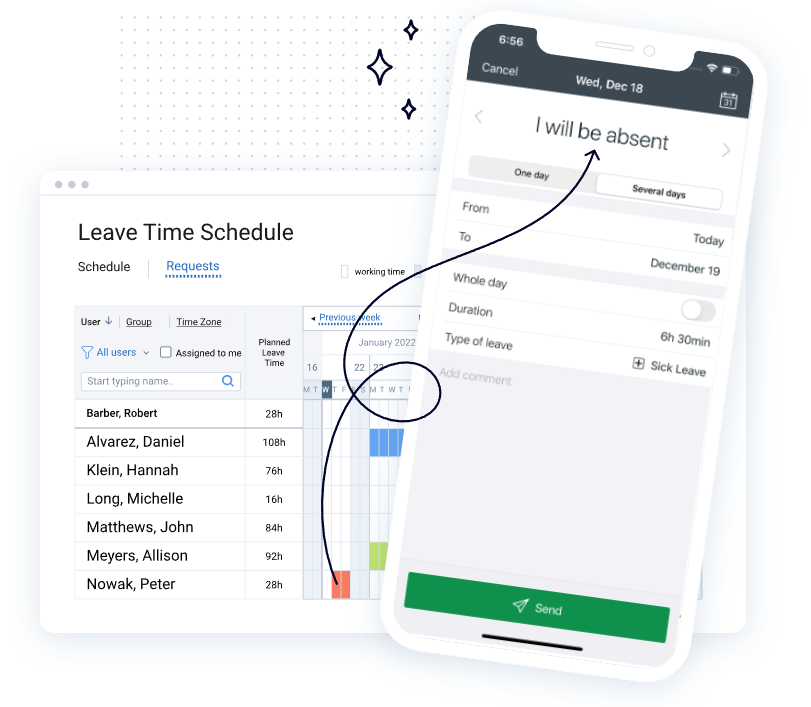
Track leave and manage last-minute schedule changes with actiPLANS Mobile.
3. Make the workplace as flexible as possible
Flexible schedules allow people to get their work done at their earliest convenience and reduce stress caused by the obligation to show up at work by a specific time.
Besides, remote work eliminates the need to go to the office in order to get things done. It can significantly improve attendance since employees feel more in control of balancing work and personal life.
4. Implement disciplinary actions for absenteeism
Relying on negative motivation is depicted as an unproductive management approach, but in some cases, it is the only thing that works.
Severe disciplinary issues, low morale, and poor attitude are not uncommon at the workplace, so your attendance management policy should provide a straightforward way to handle unplanned absences and frequent absenteeism.
The common recommendation here is not to start with punitive measures right away. Progressive discipline is what works best, starting with coaching and clarification of attendance policy provisions.
Often, constructive feedback given in the early stages of a problem provides the solution: explaining attendance expectations and overseeing employees’ work after the given feedback is usually the only disciplinary action that needs to be taken.
5. Keep a record of absences
Knowledge is power – this applies to attendance management, too. Having detailed records on employees’ planned absences helps to schedule work for future periods, distribute workloads, and plan out resources.
Many companies use special software tools for creating visual charts, reviewing all necessary details, and getting the most value out of absence data.
Keeping historical records is also important. Having the data on unscheduled absences at hand allows managers to reveal attendance trends, predict possible staff shortages, and prevent workflow problems caused by poor attendance.
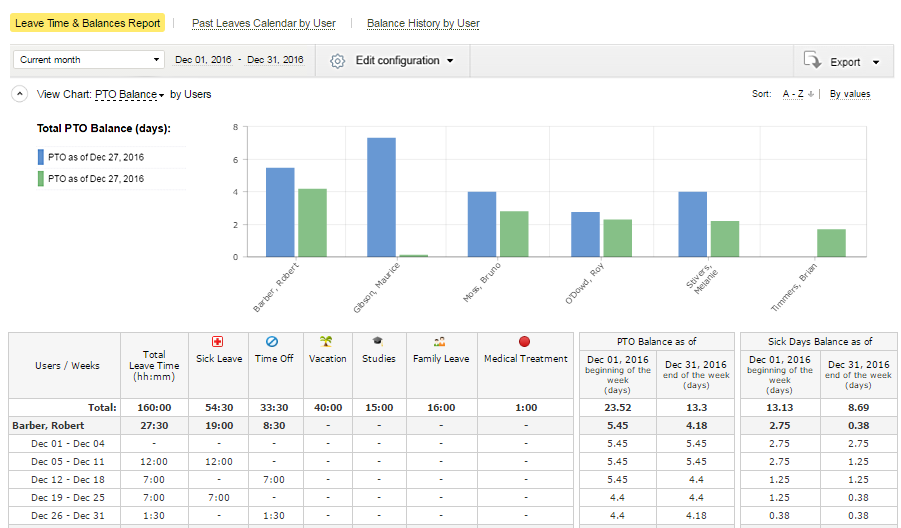
Analyze staff absences and attendance with detailed actiPLANS reports.
Main Types of Time and Attendance Solutions
When it comes to keeping track of employees’ work hours and availability, businesses have a few solid options:
- Biometric systems – These high-tech tools use unique body measurements, like fingerprints or facial recognition, to track attendance. Great for cutting down on any buddy-punching shenanigans (you know, when a mate clocks in for another).
- Mobile apps – These are perfect for remote or on-the-go teams. Employees can clock in and out right from their smartphones or other mobile devices. Many of these apps also offer GPS tracking to confirm the location, making sure everyone’s on the same level.
- Online timesheets – The OGs of attendance tracking, online timesheets are the digital (and much more convenient) versions of the traditional paper forms. They allow employees to record working hours with just a few clicks or even 100% automatically, which increases data accuracy multifold.
- Time off trackers – These tools keep track of different types of employee absences. By automating requests and approvals, maintaining a clear record of absences, and ensuring compliance with company policies and local labor laws, time off trackers simplify life for HR managers and promote a healthier work-life balance in employees.
5 Excellent Time and Attendance Solutions
1. actiPLANS
Key features:
- Leave tracking
- Flexible PTO settings
- Automated accruals
- Time tracking integration
- Staff calendar
- Notifications
- Mobile app
- Visual reports
actiPLANS allows businesses and their teams to build accurate attendance schedules, collect informative data for better workload planning, and save a lot of time on people management thanks to handy automation and a multitude of other productivity-boosting features.
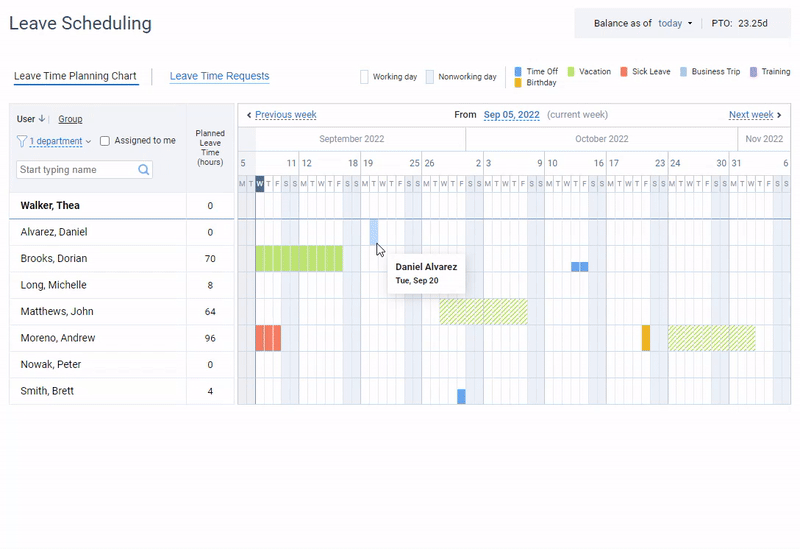
actiPLANS is super-easy to implement! Here’s how you may improve employee attendance with its help:
- Add bespoke leave types and locations to your account – The former will help you track staff absences, while the latter can be applied to schedule employee attendance and working time.
- Manage team absences via the Leave Scheduling interface – It features a visual timeline that allows employees to quickly check their current or future PTO balances, decide on vacation dates, and create leave requests in just a couple of clicks. Using this interface as a manager, you can easily review your team’s planned absences and approve / reject the submitted leave requests in bulk or individually.
- Manage team attendance via the Locations interface – It’s designed for allocating your custom location / shift types to employees using an intuitive visual chart. This chart displays the scheduled team absences and lets you build accurate attendance schedules around them. Once the schedules are created, your employees will simply need to open their actiPLANS accounts to see when or where they are supposed to be present at work.
- Don’t forget to switch on automatic notifications – They will keep everyone on the team updated about the newest schedule changes and incoming leave requests.
- Run reports to understand how resources are used – Time off reports will provide an in-depth insight into your team’s absence trends, while the Locations report will show you how the working time is allocated across employees and which types of work (or locations) are the most time-consuming.
- Use actiPLANS Mobile to manage attendance wherever you are – This mobile attendance app offers a convenient way to quickly inform your colleagues about lateness or early departures from work and check who is absent for any given day.
- Integrate actiPLANS with actiTIME to track employee progress in greater detail – This powerful software combination allows for detailed monitoring of work hours and enables you to oversee resources comprehensively. It lets you optimize workforce management, get informed to staff your projects adequately at all times and maintain a healthy work-life balance among employees.
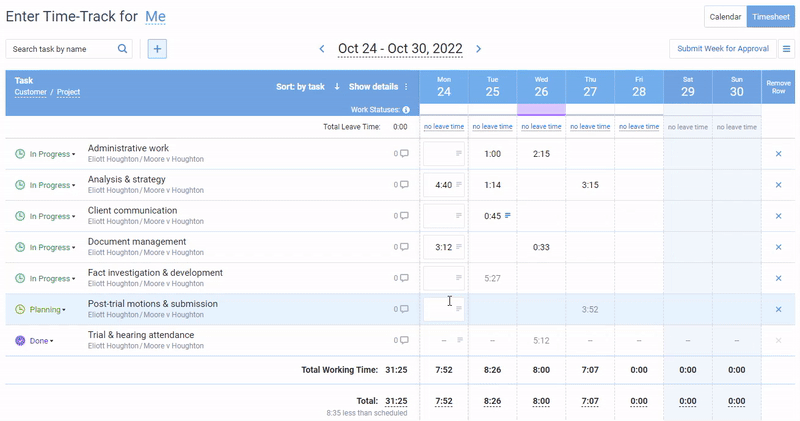
Altogether, these actiPLANS features improve attendance management by helping you control employees’ work schedules and providing a wealth of valuable data on the use of resources.
Sign up for a free 30-day trial to see them in action yourself!
Best for:
Teams of any size and from any sphere of performance.
G2 rating: 4.5 (35 reviews)
Pricing:
- Free 30-day trial.
- Free version for small teams.
- Paid plans start at $1.2 per user/month.
2. Deputy
Key features:
- Scheduling
- Time clock
- Compliance tools
- Leave management
Deputy streamlines work scheduling, time tracking, and team communication. With its help, creating and distributing rosters is a breeze and swapping shifts is as easy as a click.
Here are some of the best features this time and attendance solution has to offer:
- AI-optimized schedules – Deputy turns employee schedules from simple lists of working hours into intelligent predictions that align staff availability with business needs. It automates the process to help you stay at your peak performance without overstaffing.
- Labor law compliance tools – They facilitate overtime control to help you keep your staff-related costs in check, ensure everyone gets their meal and rest breaks on time, and make it much easier to navigate the intricacies of the fair workweek regulations.
- Online timesheets – This feature offers insight into the heart of your operations, allowing you to track and analyze your team’s hours in order to drive improvement.
Best for:
Companies in the service industry.
G2 rating: 4.6 (277 reviews)
Pricing:
- Free 31-day trial.
- Plans start at $4.50 per user/month.
3. OnTheClock
Key features:
- Leave management
- Time clock
- Overtime tracking
- Location maps
OnTheClock is a cloud-based time and attendance solution that allows you to record employee hours with precision and simplifies the payroll process a great deal. The software is packed with features like GPS location tracking, PTO management, and job costing, which turn it into a one-stop shop for most of your workforce management needs.
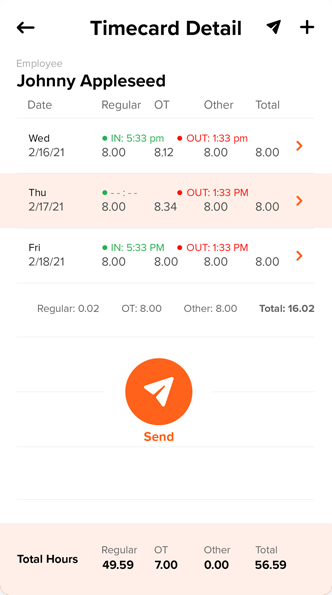
Here are some of OnTheClock’s standout features:
- Customizable PTO management rules – You can tailor PTO accruals, carryovers, and usage to fit your company’s unique policies and make sure that both you and your employees are always on the same page.
- GPS punch recording – Employees can clock in from wherever they are, and you get a location map to verify their whereabouts. This way, OnTheClock establishes a trust-but-verify approach that keeps everything transparent.
- Overtime tracking and alerts – This feature helps to manage costs and comply with labor laws more effectively. It automatically tracks overtime hours and notifies you about any work time excesses, so you can avoid unexpected overtime costs and rest assured that your team isn’t overworking.
Best for:
Companies with mobile and field workers.
G2 rating: 4.6 (53 reviews)
Pricing:
- Free 30-day trial.
- Free version for 1-2 users.
- Paid plans start at $3.45 per user/month.
4. Truein
Key features:
- Shift scheduling
- Facial recognition
- GPS tracking
- Time off management
Truein is a tech-savvy solution that uses face recognition to register employee attendance. It simplifies workforce planning, makes shift management a breeze, and helps to keep an eye on compliance requirements so you remain on the right side of the law.
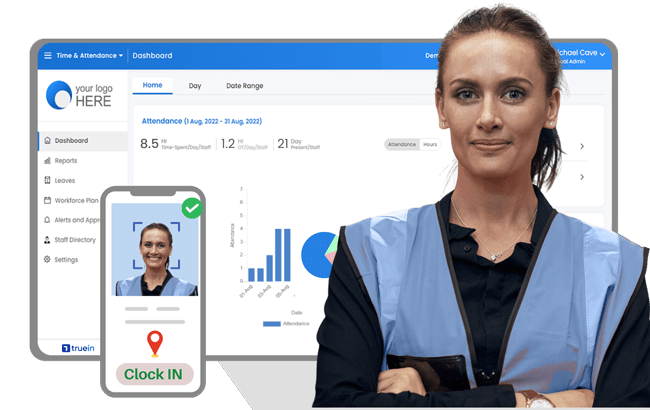
Here’s the scoop on why Truein is beneficial:
- Facial recognition – No more punching in codes or swiping cards. Employees just show up, take a selfie, and they’re clocked in. This tech makes attendance tracking truly convenient while eliminating the risk of buddy punching for good.
- Automated shift scheduling – This feature takes into account staff absences and availability to whip up a schedule that works for everyone. With its help, you can say goodbye to the endless back-and-forth emails trying to fill shifts for the upcoming week.
- Workforce analytics – It provides insights into your staffing trends, compliance, and resource allocation efficiency. It gives you the power to make informed decisions that can boost your workplace’s overall effectiveness.
Best for:
Contractual and distributed workforce.
Capterra rating: 4.8 (41 reviews)
Pricing:
- Plans start at the base fee of $32.5 /month + $1.5 per user/month.
5. Buddy Punch
Key features:
- Time clock
- Payroll
- Employee scheduling
- Time off management
Buddy Punch is a virtual time clock that simplifies attendance tracking and integrates seamlessly with your payroll systems, making the whole “payday headache” a thing of the past.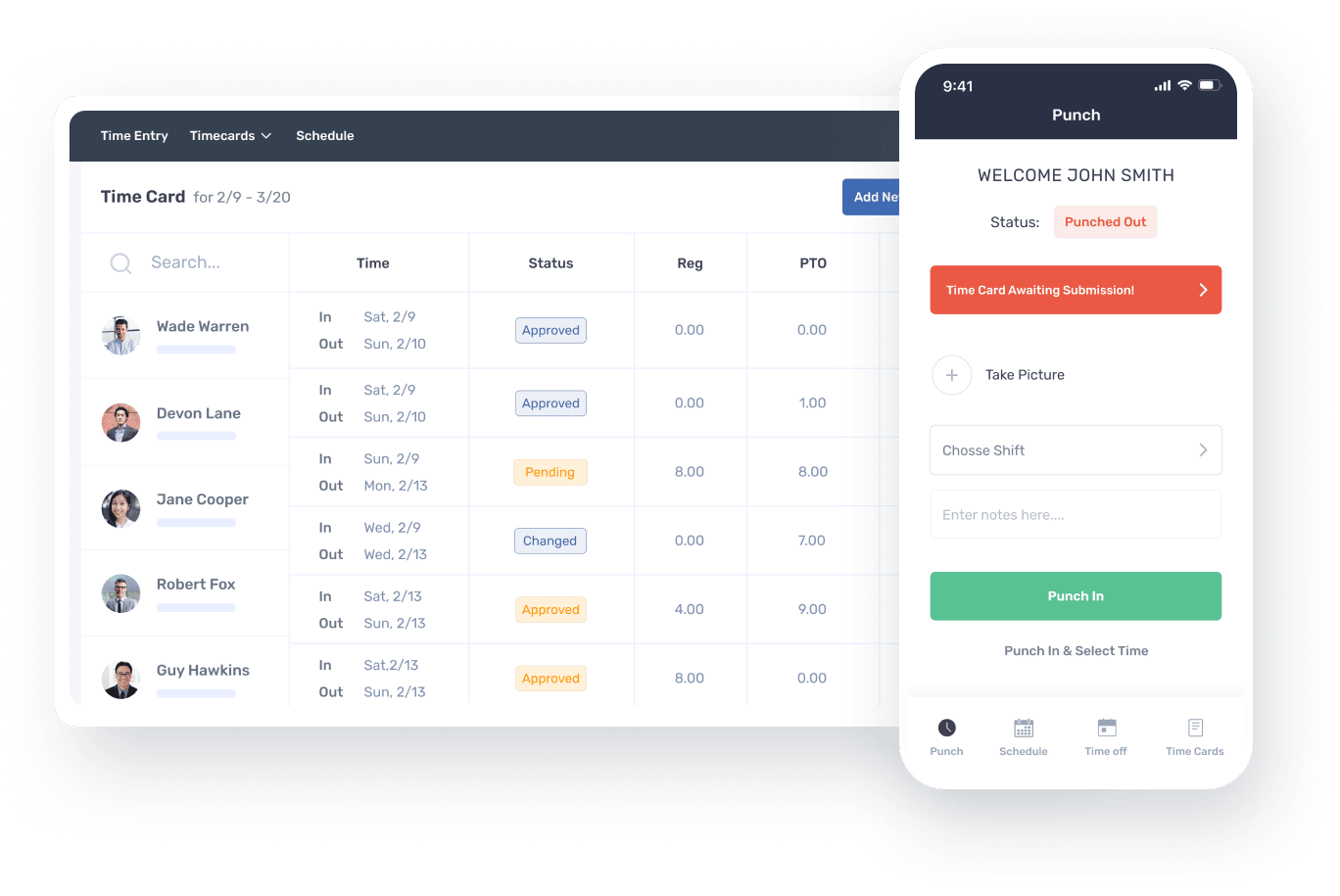
Here’s how Buddy Punch helps:
- Flexible time clock options – Whether your team is remote, in-office, or a mix of both, Buddy Punch meets you where you are. Employees can clock in and out from anywhere, so you can keep tabs on your mobile workforce without a hitch.
- Employee scheduling – This feature is incredibly user-friendly and lets you create, adjust, and communicate schedules in just a couple of minutes.
- Automatic payroll tax filings – Buddy Punch takes the headache out of payroll taxes by automating the process. It fosters better compliance, accuracy, and timeliness, which helps avoid the pitfalls of manual filings.
Best for:
Remote team management.
Capterra rating: 4.8 (238 reviews)
Pricing:
- Free trial.
- Plans start at $19 base fee per month + $3.99 per user/month.
Summary
Employee attendance management is a complex process that is closely connected to other processes and trends at the workplace.
Building up a clear policy, explaining it to the employees, enforcing it, and staying informed on people’s absences is key for efficiently managing attendance dynamics in the team. Besides, keeping detailed records of absence data and using them for both analysis and planning allows companies to overcome possible issues, maintain a healthy work environment, and stay efficient and productive as a team.
With the help of high-quality software, doing it all right is as easy as pie! So, start using actiPLANS today and get ready for superior attendance management results.



